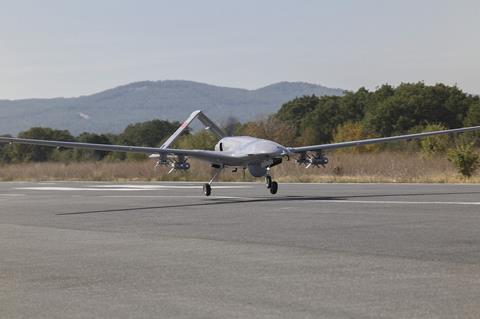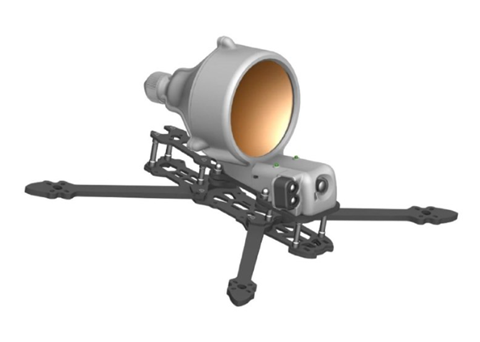The Ukrainian military initiative known as “Army of Drones” has revealed a new uncrewed aerial vehicle (UAV) munition, one designed to knock out armoured vehicles used in ground combat.
The design features a powerful weapon known as an explosively formed penetrator (EFP) designed to be mounted on a small quadcopter-style UAV.
EFPs use a cone-shaped explosive charge, typically lined with copper, to form a molten jet capable of piercing armour plating used on military vehicles.

The technology is not new and has been included in many anti-tank and anti-armour munitions manufactured for Western military forces. Iran supplied EFPs to militia groups in Iraq, where they were used to deadly effect against US forces during the post-2003 invasion American occupation.
However, attaching an EFP to a remotely-flown quadcopter UAV does appear to be a novel innovation of the Ukrainian war effort.
The Army of Drones project revealed the concept on 15 January on the social media service Telegram.
“These weapons are effective against lightly armoured vehicles [like] self-propelled guns, infantry fighting vehicles, armoured personnel carriers,” the Ukrainian-language post says.
Both Ukraine and Russia have been racing to expand their domestic capacity to develop and produce small UAVs, which have emerged as one of the most effective battlefield assets in the nearly two-year-long war.
Cut off from Western markets, Russia is currently sourcing nearly all of its UAVs from China. Iran is also supplying the Kremlin with deadly Shahed-136 kamikaze drones.

However, Moscow has set the goal of having 41% of Russia’s UAVs be domestically supplied by 2025. The Kremlin in October said it plans to invest some Rb60 billion ($615 million) toward that end.
Ukraine has also been rushing to develop its own UAV industrial base. While the Western alliance is supplying the country with everything from fighter jets to main battle tanks, the USA has long restricted the export of UAVs.
Washington has provided Kyiv with a small number of UAVs and a larger quantity of loitering munitions.
Turkey has found a niche providing Ukraine with larger combat UAVs, such as the Baykar Bayraktar TB-2.
While these were essential to the high-intensity defence of Kyiv in the war’s early days, it is the large numbers of cheap, reusable and highly-flexible commercial off-the-shelf quadcopters that have proven most-effective in the grinding trench and urban warfare of the conflict’s past year.
Globally, Russia’s ally China is the largest producer of the quadcopters used by hobbyists, scientists and now soldiers. Shenzhen-based DJI is the leading manufacturer of commercial UAVs by global sales volume.
Ukraine’s Army of Drones initiative is meant to counter this vulnerability by building UAV capacity at home.
The government in Kyiv in 2023 said it hopes to spend up to $1 billion on the effort, which will include expanding domestic production, designing new UAV types and training operators.
In September, Ukraine claimed it had already trained 10,000 UAV operators in the first half of 2023.
The initiative comes as interest in supporting the beleaguered nation is waning in some Western capitals, in particular an election-year Washington.
The shift could see Ukraine with far fewer resources from abroad in the coming year – both financial and material – making a cheap, domestic source of the essential UAVs all the more critical.


























